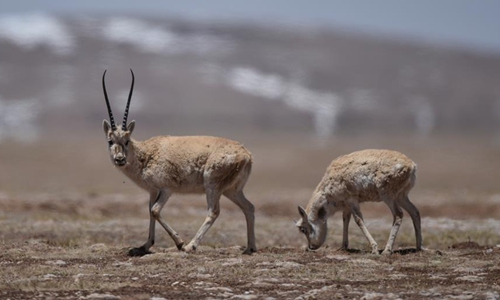
Two Tibetan antelopes are seen in Hoh Xil, northwest China's Qinghai Province, May 15, 2020. Pregnant Tibetan antelopes have begun their annual migration to the heart of northwest China's Hoh Xil nature reserve to give birth, according to the statement released on Friday by the reserve's management bureau. On April 30, the first group of 43 Tibetan antelopes passed the Qinghai-Tibet highway en route to Zonag Lake and other breeding areas in Hoh Xil, about a week earlier than last year. Every year, tens of thousands of pregnant Tibetan antelopes start to migrate to Hoh Xil in May to give birth, after mating in November or December, and leave with their offspring in around August. In July 2017, Hoh Xil became a world heritage site and is home to about 60,000 Tibetan antelopes. (Xinhua/Wu Gang)
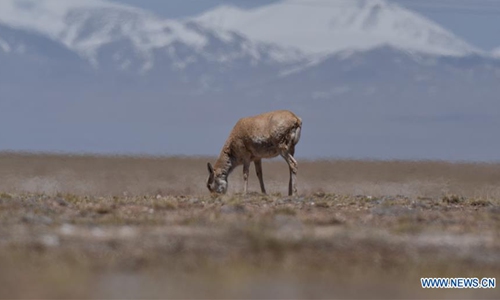
A Tibetan antelope is seen in Hoh Xil, northwest China's Qinghai Province, May 16, 2020. Pregnant Tibetan antelopes have begun their annual migration to the heart of northwest China's Hoh Xil nature reserve to give birth, according to the statement released on Friday by the reserve's management bureau. On April 30, the first group of 43 Tibetan antelopes passed the Qinghai-Tibet highway en route to Zonag Lake and other breeding areas in Hoh Xil, about a week earlier than last year. Every year, tens of thousands of pregnant Tibetan antelopes start to migrate to Hoh Xil in May to give birth, after mating in November or December, and leave with their offspring in around August. In July 2017, Hoh Xil became a world heritage site and is home to about 60,000 Tibetan antelopes. (Xinhua/Wu Gang)
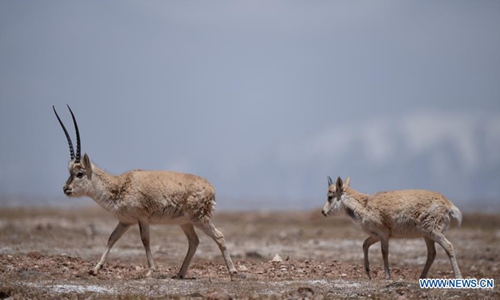
Two Tibetan antelopes are seen in Hoh Xil, northwest China's Qinghai Province, May 15, 2020. Pregnant Tibetan antelopes have begun their annual migration to the heart of northwest China's Hoh Xil nature reserve to give birth, according to the statement released on Friday by the reserve's management bureau. On April 30, the first group of 43 Tibetan antelopes passed the Qinghai-Tibet highway en route to Zonag Lake and other breeding areas in Hoh Xil, about a week earlier than last year. Every year, tens of thousands of pregnant Tibetan antelopes start to migrate to Hoh Xil in May to give birth, after mating in November or December, and leave with their offspring in around August. In July 2017, Hoh Xil became a world heritage site and is home to about 60,000 Tibetan antelopes. (Xinhua/Wu Gang)
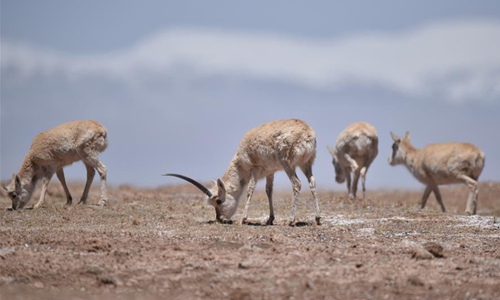
A flock of Tibetan antelopes are seen in Hoh Xil, northwest China's Qinghai Province, May 16, 2020. Pregnant Tibetan antelopes have begun their annual migration to the heart of northwest China's Hoh Xil nature reserve to give birth, according to the statement released on Friday by the reserve's management bureau. On April 30, the first group of 43 Tibetan antelopes passed the Qinghai-Tibet highway en route to Zonag Lake and other breeding areas in Hoh Xil, about a week earlier than last year. Every year, tens of thousands of pregnant Tibetan antelopes start to migrate to Hoh Xil in May to give birth, after mating in November or December, and leave with their offspring in around August. In July 2017, Hoh Xil became a world heritage site and is home to about 60,000 Tibetan antelopes. (Xinhua/Wu Gang)
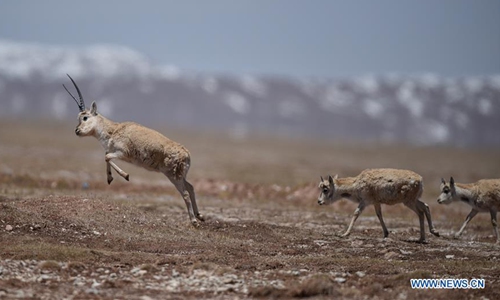
Tibetan antelopes are seen in Hoh Xil, northwest China's Qinghai Province, May 15, 2020. Pregnant Tibetan antelopes have begun their annual migration to the heart of northwest China's Hoh Xil nature reserve to give birth, according to the statement released on Friday by the reserve's management bureau. On April 30, the first group of 43 Tibetan antelopes passed the Qinghai-Tibet highway en route to Zonag Lake and other breeding areas in Hoh Xil, about a week earlier than last year. Every year, tens of thousands of pregnant Tibetan antelopes start to migrate to Hoh Xil in May to give birth, after mating in November or December, and leave with their offspring in around August. In July 2017, Hoh Xil became a world heritage site and is home to about 60,000 Tibetan antelopes. (Xinhua/Wu Gang)
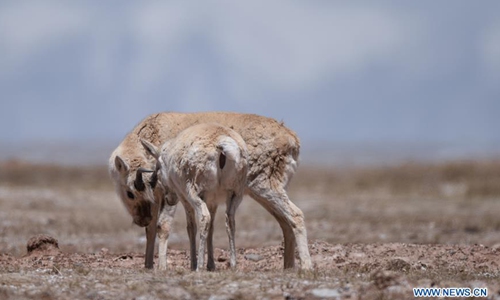
Two Tibetan antelopes are seen in Hoh Xil, northwest China's Qinghai Province, May 15, 2020. Pregnant Tibetan antelopes have begun their annual migration to the heart of northwest China's Hoh Xil nature reserve to give birth, according to the statement released on Friday by the reserve's management bureau. On April 30, the first group of 43 Tibetan antelopes passed the Qinghai-Tibet highway en route to Zonag Lake and other breeding areas in Hoh Xil, about a week earlier than last year. Every year, tens of thousands of pregnant Tibetan antelopes start to migrate to Hoh Xil in May to give birth, after mating in November or December, and leave with their offspring in around August. In July 2017, Hoh Xil became a world heritage site and is home to about 60,000 Tibetan antelopes. (Xinhua/Wu Gang)
